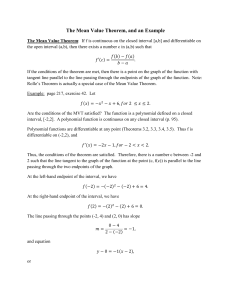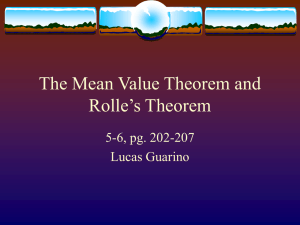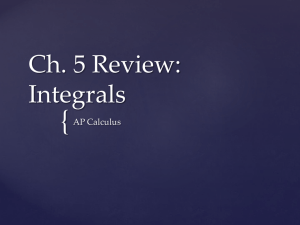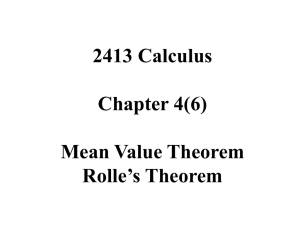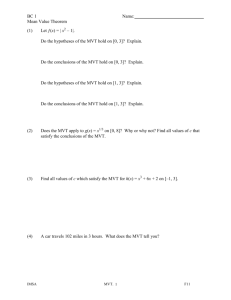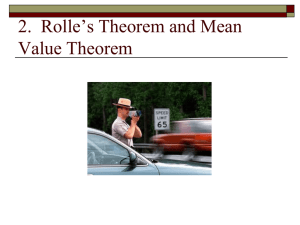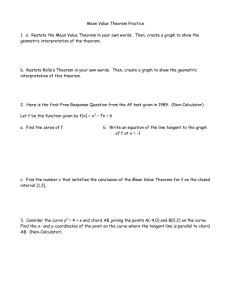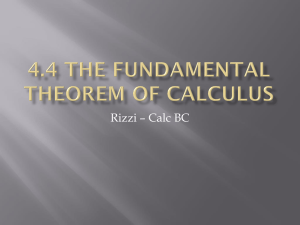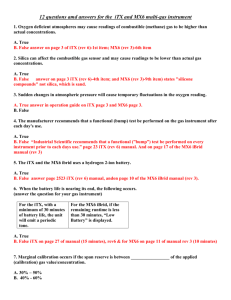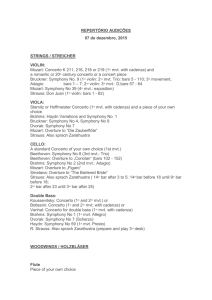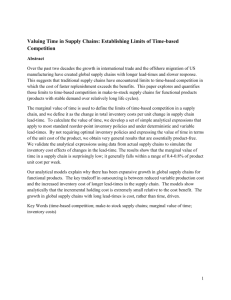MVT Theorem
advertisement
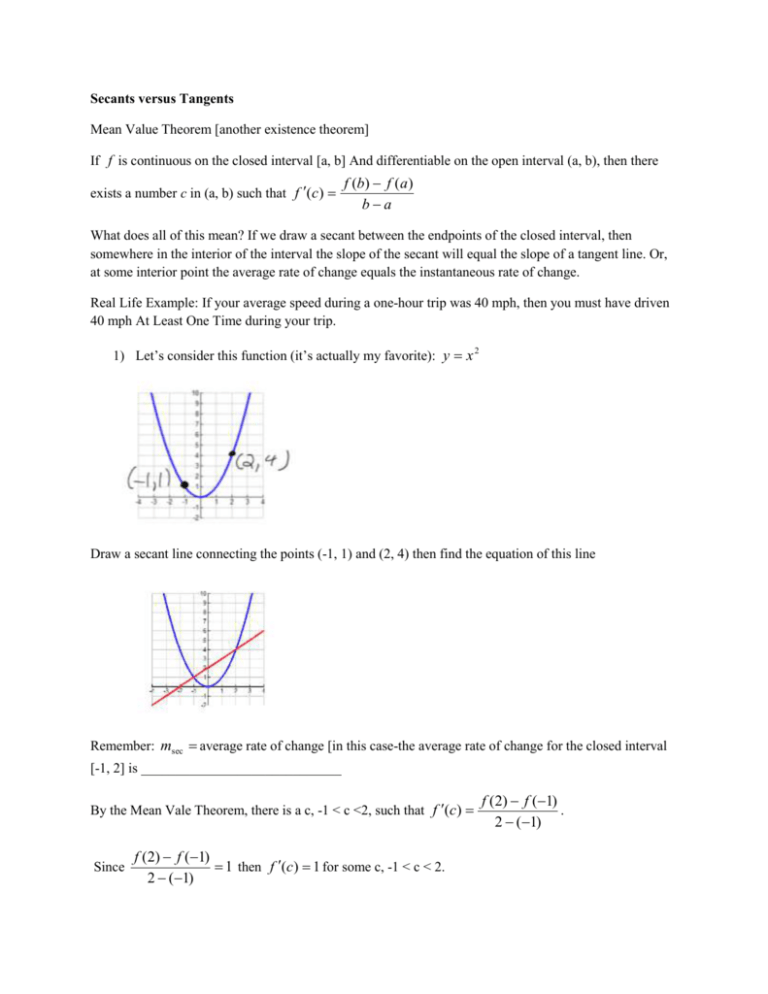
Secants versus Tangents Mean Value Theorem [another existence theorem] If f is continuous on the closed interval [a, b] And differentiable on the open interval (a, b), then there exists a number c in (a, b) such that f (c) f (b) f (a ) ba What does all of this mean? If we draw a secant between the endpoints of the closed interval, then somewhere in the interior of the interval the slope of the secant will equal the slope of a tangent line. Or, at some interior point the average rate of change equals the instantaneous rate of change. Real Life Example: If your average speed during a one-hour trip was 40 mph, then you must have driven 40 mph At Least One Time during your trip. 1) Let’s consider this function (it’s actually my favorite): y x 2 Draw a secant line connecting the points (-1, 1) and (2, 4) then find the equation of this line Remember: msec average rate of change [in this case-the average rate of change for the closed interval [-1, 2] is _____________________________ By the Mean Vale Theorem, there is a c, -1 < c <2, such that f (c) Since f (2) f (1) 1 then f (c) 1 for some c, -1 < c < 2. 2 (1) f (2) f (1) . 2 (1) This means that there is some point on the interior of [-1, 2] where the instantaneous rate of change is equal to the average rate of change. Or there is some point on the interior of [-1, 2] where msec mtan 2) Find this value of c and use it to draw in the tangent line at that vale of c. a) Are these two lines parallel? b) Does the tangent lie above or below the curve? 2 3) Now let’s consider a different function: y 4 x a) Draw a secant line connecting the points (-1, 3) and (2, 0) then find the equation of this line. Remember: msec average rate of change [in this case-the average rate of change for the closed interval [-1, 2] Now let’s use our new theorem. By the MVT there is a c, -1 < c < 2, such that f (c) f (2) f (1) f (2) f (1) . Since 1 , then 2 (1) 2 (1) f (c) 1 for some c, -1 < c< 2. This means that there is some point on the interior of [-1, 2] where the instantaneous rate of change is equal to the average rate of change. Or there is some point on the interior of [-1, 2] where the instantaneous rate of change is equal to the average rate of change. Or there is some point on the interior of [-1, 2] where msec mtan b) Find this value of c and use it to draw in the tangent line at that value of c. c) Is the tangent line above or below the curve? 4) Consider the function y x on [-2, 2] Draw the function and the secant line between the endpoints. Does the MVT apply? Let’s try some MVT problems 5) At what value(s) does f ( x) x 3 x 2 2 x satisfy the Mean Value Theorem on the interval [-1, 1] Always start by writing out the MVT statement!!! By the MVT there is a c, ____________ such that ________________________ Since________________ then 6) Now find the value that satisfies the MVT for y x 1 for x 1 2 ,2 Always begin by writing out the MVT statement. By the MVT there is a c, ____________ such that ________________________ Since________________ then 7) Now for some more interesting problems: A police officer clocks a commuter’s speed at 50 mph as he enters a tunnel whose length is exactly 0.75 miles. A second officer measures the commuter’s speed at 45 mph as he exits the tunnel 43 seconds later. Use the MVT to justify the speeding ticket that the commuter received even though the posted speed limit was 50 mph. The Mean Value Theorem If f is continuous on the closed interval [a, b] and differentiable on the open interval (a, b), then there exists a number c in (a, b) such that f (c) f (b) f (a ) ba Notice that the function must be continuous AND differentiable. My MVT Justification Template: By the Mean Value Theorem, there is a c, a c b, such that f (c) f (b) f (a ) . Since ba f (b) f (a ) __________ , then there is a c, a c b, such that f (c) ______________ ba

